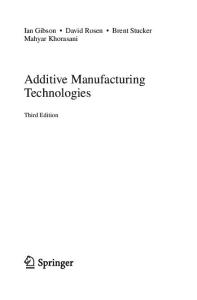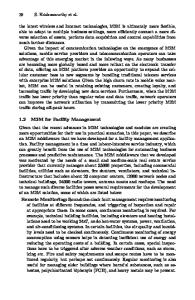Optimization of the production processes of powder-based additive manufacturing technologies by means of a machine learn
- PDF / 2,208,280 Bytes
- 15 Pages / 595.276 x 790.866 pts Page_size
- 24 Downloads / 280 Views
PRODUCTION PROCESS
Optimization of the production processes of powder‑based additive manufacturing technologies by means of a machine learning model for the temporal prognosis of the build and cooling phase Paul Victor Osswald1 · Saad Kamal Mustafa1 · Christoph Kaa1 · Philip Obst1 · Martin Friedrich1 · Markus Pfeil3 · Dominik Rietzel1 · Gerd Witt2 Received: 11 August 2020 / Accepted: 22 September 2020 © German Academic Society for Production Engineering (WGP) 2020
Abstract The increase in additive manufacturing production volume in recent years has led, not only, to a need for an increased level of productivity during the build job, but also the optimization of other crucial steps in each respective technologies process chain. With HP’s Multi-jet Fusion technology relatively recent entry (2014) into a seemingly stagnant scene of industrial scale powder-based additive manufacturing, it presented itself as an ideal candidate for post-processing optimization using methods of machine learning due to its faster print time. 66% of the Multi-jet Fusion production process, from build job preparation and nesting to delivery of finished parts is comprised of its cooling process step. This cooling process step can take anywhere from 3 to 30 h, depending on a number of factors. While speeding up cooling does not come into question when processing semi-crystalline polymers, such as polyamides, knowing the necessary cooling time with relatively high accuracy, becomes crucial. In this study, a machine learning model was created to predict a significantly more accurate cooling time using a number of build job parameters. The optimized cooling model was trained using the measured cooling times of varying build jobs as output and build job height, number of layers, packing density, number of parts and room temperature as inputs. The machine learning model predicts significantly more accurate cooling times than the manufacturer predictions. Furthermore, as with all machine learning models, it was shown that an increased number of data, resulted in more accurate predictions. The implementation of the optimized cooling model at BMW’s AM production facility leads to increased transparency, leaner production and a higher overall economic viability of AM technologies. Keywords Additive manufacturing · Multi-jet fusion · Machine learning · Industrial internet of things · Industry 4.0
1 Introduction The rapid growth of additive manufacturing (AM) over the course of the past decade, shown below in Fig. 1, has not only led to the development of new state of the art technologies such as Digital Light Synthesis (DLS) and MultiJet Fusion (MJF), but also a need to prepare/optimize each respective additive manufacturing process chain for midhigh volume production. * Paul Victor Osswald [email protected] 1
BMW Group, Munich, Germany
2
University Duisburg-Essen, Duisburg, Germany
3
Ravensburg-Weingarten University of Applied Sciences, Weingarten, Germany
While the print speed can fluctuate significantly depending on technology
Data Loading...











